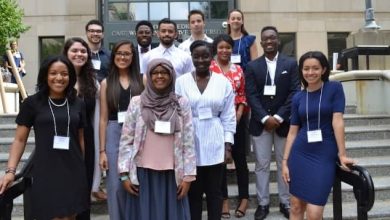What is Boston University Transfer Acceptance Rate ?

Boston University is a competitive school for transfer students, with only 24% of applicants being admitted each year. To be a competitive applicant for Boston University your ACT score should come close to the average. An ACT score of 28 will move you up to the 75th percentile, which is where you need to be for admission. You’ll also need a strong high school GPA of 3.3 or higher and good letters of recommendation from teachers and counselors that speak to your academic and personal strengths as an applicant.
The application process at Boston University can seem confusing at first, but don’t let that scare you off! There are plenty of resources available on their admissions website, including some handy tips on how to improve your chances of transferring successfully. For example:
- BU is test-optional—but this does not mean optional scores won’t help you get in! If your SAT or ACT scores are above the average range (which they will be if you’ve taken our course) then it’s better that they see them than not see them at all!
- Submit any relevant essays about yourself or extracurricular activities during the application process (this can include AP exams). These will show BU what makes you unique—and prove that even though there may not have been these opportunities when applying as a freshman student, they exist now so there’s no reason not to take advantage!
Contents
What Will You Learn at Boston University?
Boston University offers a variety of master’s degrees in fields such as engineering, law, medicine, and social work. The school provides master’s degrees in the arts and sciences, business administration, public health, fine arts and communication. Boston University also offers master’s degree programs in computer science and information technology.
The university has several other programs that are worth noting. They include: a Master of Science in Analytics program; a Master of Science in Management Studies program; a Master of Science in Management of Technology program; and a Master of Business Administration program.
BU also offers over 250 undergraduate concentrations across nine schools: Arts & Sciences; Engineering; Communications; Social Sciences & Public Affairs; Health Professions & Allied Health Services; School of Education; Metropolitan College (College for Adults); Continuing Education (College for Lifelong Learning); Extended Study Programs (including Summer Term).
Related Post:Butler University Ranking: Tuition and Requirements
How Much Does It Cost to Attend Boston University?
Boston University is a private, four-year institution that was founded in 1839. As of 2018, the average cost per year to attend Boston University is $70,000. Of that figure, approximately $55,000 goes toward tuition and fees while the remaining $15,000 covers room and board.
Below is a breakdown of Boston University’s tuition and fees based on the time frame they cover:
- Tuition and Fees per Year: $55,000
- Tuition and Fees per Semester: $27,500
What Kind of Financial Aid Can You Get at Boston University?
Boston University’s tuition and fees are around $52,816 for the 2019-2020 academic year. The cost of room and board is estimated to be around $17,310. Financial aid opportunities are available to transfer students, international students, graduate students, and online students. Students who wish to apply for financial aid should file the Free Application for Federal Student Aid (FAFSA). To apply for Boston University financial aid complete these steps:
- Fill out the FAFSA form with the school code: 002130
- After applying to Boston University visit their financial aid website where you can check your application status
- You may need tax information from your parents if you are still a dependent student
Why Should You Attend Boston University?
What is Boston University known for?
Boston University, or BU, is a large research university with a diverse student population. Attending BU allows you to study many different subjects and choose from the schools of arts and sciences, business administration, education, engineering, fine arts, general studies, hospitality administration, law or medicine. The school has a large endowment and offers excellent resources for students.
What are the pros and cons of attending Boston University?
Pros: The university has a good sports program (the Terriers), though it is not part of any athletic conference.
Cons: It is not as well-known as other universities on the east coast like Harvard or Yale (though this could be an advantage if you want to avoid the pressure that comes with these names).
Academic Programs
Boston University has many great academic programs to choose from, but also a low transfer acceptance rate. This school is known for their strong focus on the sciences and engineering, which are very difficult majors to be accepted into. Students often find that College of Arts and Sciences offers more easily accessible majors such as psychology, english, and history. Boston University is not an easy school to get into, but if you do make it in the work it will be worth it!
Acceptance Rate
The acceptance rate at Boston University is quite high with a total of 83% of applicants being accepted. The school’s most popular majors are business, engineering, and science.
How Good Are Boston University’s Sports Programs?
It’s no secret that some of the most successful college sports programs in the country are athletically dominant. It’s nearly impossible for a school to compete without excellent facilities, a deep pool of athletic talent, and an overall commitment to excellence. Boston University is one such university. There are more than 30 Division I sports programs offered at BU, and they have won several national championships over the years. The Terriers are members of the Patriot League and Hockey East Conference.
Men’s hockey has been particularly successful at BU: The team has won five national championships since its first season in 1918—the most recent being in 2009—and has been home to many NHL players over the years (including Jack Eichel, who was drafted second overall in 2015). Its women’s hockey program also ranks among the best in the nation; it has produced Olympians and All-Americans as well as two national championships but hasn’t yet won a Hockey East title.
What Is the Student Experience Like at Boston University?
So, who goes to Boston University? The school is huge, with over 18,000 undergrads and a student-faculty ratio of 12:1. BU started out as a theological seminary in the 1830s before becoming a research university in 1869. It’s known for its business, communications and fine arts programs.
BU encourages students to get involved at the school. There are over 250 clubs and organizations that you can join, from the BU Pride Alliance to the Chess Club to Ultimate Frisbee. If you don’t see something that appeals to you right away, don’t worry–there are several groups dedicated just to building new clubs.
Does BU Have a Good Medical School or Law School?
Boston University School of Medicine and Boston University School of Law are the graduate schools of Boston University. Many prospective students want to know whether BU has a good medical school or law school. Fortunately for those students, both schools have excellent reputations. In fact, U.S. News and World Report ranks BU Law in the Top 20 on its list of best law schools in the country.
BU Law is also known for having a very competitive admissions process; it accepts less than one-fourth of its applicants. However, because it is such an outstanding school, many employers are always looking to hire graduates from BU Law, and graduates often have no problem finding impressive jobs upon graduation from this prestigious law school!
What Is the Surrounding Area Like?
Boston is a walkable city, and your fellow students will agree that the surrounding area is safe. You’ll find lots of restaurants, cafes and shops in the vicinity of Boston University. In fact, Boston is home to hundreds of colleges and universities. It’s also a hub for business, entertainment and politics. If you like walking, you’ll be pleased to know that Boston boasts a Walk Score of 77. The city has many benefits for public transportation users as well: it has a Transit Score of 73 and a Bike Score of 66.
If you’re into sports, you will be happy to know that the university has 11 varsity athletic teams that compete in NCAA Division I sporting events. The school’s mascot is Rhett the Terrier (a derivative of their nickname: “The Terriers”).
You can take advantage of all that Boston offers by making use of its many parks and theaters during your free time at school. When it comes time to eat out, one restaurant close by is Wagamama Usa Inc., which serves Asian cuisine on Boylston Street/Commonwealth Avenue (across from Boston University). If you enjoy cooking, then visiting Whole Foods Market may become part of your routine too—it’s located on Commonwealth Avenue/Harvard Avenue near Boston University.
Related Post:Surgical Tech Certificate Programs
BU has far more to offer than their sports programs.
With a strong academic reputation and top-quality facilities, programs, professors, and students, Boston University is understandably popular with prospective undergraduates. In addition to its high acceptance rate, BU also offers rolling admissions for fall applicants. This means that you can apply anytime between September 1st and February 1st (the application deadline) and receive your decision within two weeks. You don’t have to rush to get it done on the December 15th early action or January 1st regular decision deadlines like many other schools require. Also consider that BU’s location in Boston is great for those seeking career opportunities after graduation; with the city of Boston proper having a population of over 650,000 people and the Greater Boston Area (including Cambridge) having a population of over 4 million people, there are plenty of opportunities for internships while in school as well as jobs after graduation. Lastly but not leastly, BU offers a variety of sports teams as well as clubs and activities—and I haven’t even mentioned our mascot Rhett yet!
History of Boston University
Boston University is a private, coeducational university in Boston, Massachusetts, United States. There are 15 schools and colleges at the institution. The School of Law, the School of Medicine, the Goldman School of Dental Medicine, and the School of Management all provide professional degrees. Graduate degree programs in education, engineering, and the arts and sciences are all accessible. Internship programs are offered in locations across the world, including Washington, D.C., London, Moscow, Beijing (Beijing), Madrid, Paris, and Sydney, Australia, while study-abroad options are available in Europe, Israel, Central and South America, and Africa. The SGI/Cray Origin2000 parallel supercomputer is housed at the Center for Computational Science. About 1.9 million books are housed in Mugar Memorial Library and its branches, and its archives contain the papers of Franz Liszt, Theodore Roosevelt, and Robert Frost. The total number of students is estimated to be around 30,000.
In 1839, Boston University was founded as a Methodist theology school in Vermont. In 1867, the institution relocated to Boston. When Helen Magill White graduated from Boston University, she became the first American woman to receive a Ph.D. The university was one of the first American institutions of higher education to accept African-American and international students, as well as the first in the state to award degrees to women. Martin Luther King, Jr., Franz Kline, Barbara Jordan, Edward Brooke, Anna Howard Shaw, and David Hemery are among the notable graduates.
Related Post:How Technology has Changed Education









